Salmon, story, and the Skeena River—you’ll find it all at the North Pacific Cannery National Historic Site, a beautifully preserved slice of British Columbia’s fishing past. Tucked along the Inverness Passage just outside Prince Rupert, this was one of our few “must-do” stops on an otherwise delightfully unscheduled B.C. road trip.
And let me tell you—it delivered.
📌 Disclosure: This post contains affiliate links. If you make a purchase, we may receive a small commission at no extra cost to you.
Table of Contents
The North Pacific Cannery National Historic Site
While salmon canning helped shape the economic backbone of British Columbia’s coast, today only echoes of that era remain. The North Pacific Cannery, established in 1889, is the oldest surviving salmon cannery building in the province—and trust me, it’s more than just old boards and rusty machines.
At its peak, over 200 canneries dotted the B.C. coastline at different periods in time. Today, North Pacific stands as a living museum to a way of life that shaped many coastal B.C. communities for over a century.
Here you can walk the same boardwalks cannery workers did. Peek inside bunkhouses. Learn how salmon were cleaned, canned, and shipped across the globe—sometimes as far as England before 1900.
And yes, you’ll want to take the tour.
P.S. Don’t miss our round-up post outlining the entire BC road trip!

A Close Call and a Catchy Tour
In true road trip fashion, we nearly missed it. After spending longer than planned at Kitselas Canyon (worth every minute), we screeched into the cannery parking lot at 1:59 p.m.
“Can we still catch the 2 o’clock tour?” I asked the woman behind the counter.
“You just made it,” she said, smiling. “They’re headed into the building now.”
Score.
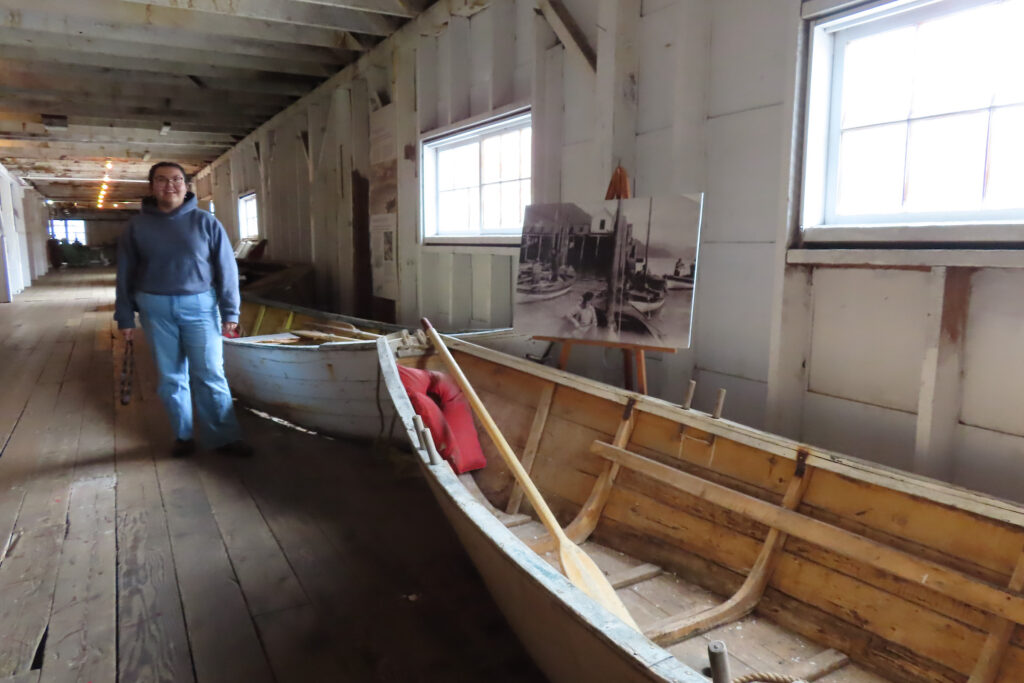
Cannery on the Skeena
We started with a big-picture view: a map showing the location of North Pacific Cannery at the mouth of the Skeena River, the second-longest river – after the Fraser – entirely within B.C’s borders.
Fun Fact: The Tsimshian and Gitxsan peoples call the river K’san.
The Skeena splits into three passages before meeting the Pacific—Telegraph, Marcus, and Inverness, where North Pacific is located. At one time, more than 30 canneries lined the Skeena alone. Today, this site is a rare window into what once was a buzzing seasonal economy.
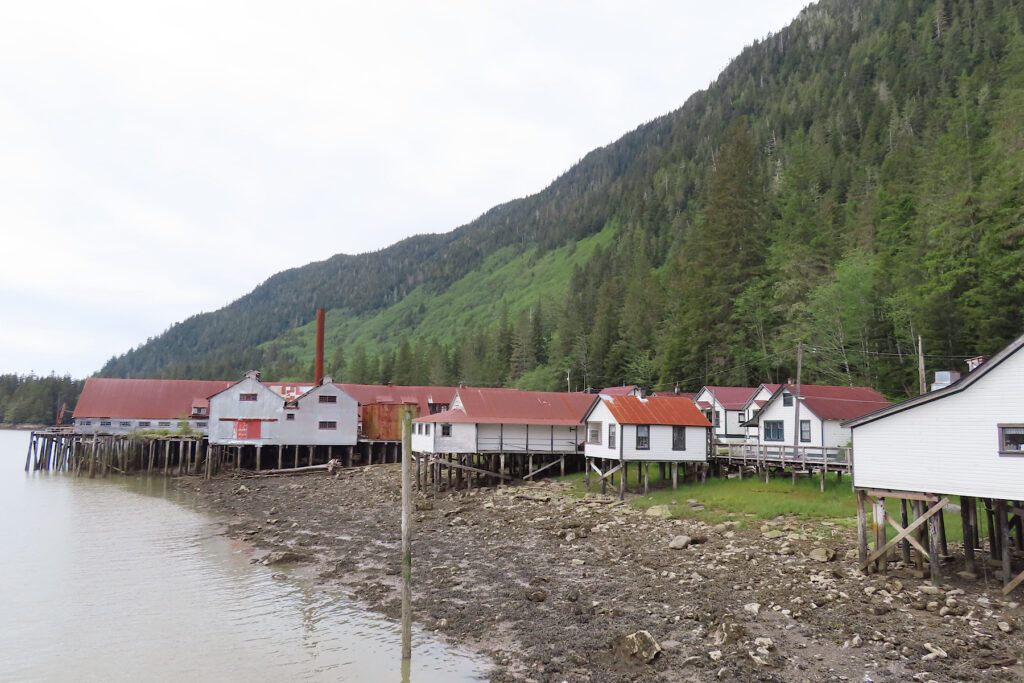
Stepping Into the Past
Back out on the wooden boardwalk, we headed for the First Nations housing area, once part of a sprawling, now mostly vanished network of buildings. Markers show where homes once stood—reminders of families who returned here every season for decades.

We stepped into the machine shop, built in 1923 and relocated here in 1936. It looked like the crew had just clocked out—tools, parts, and even scrap piles beneath the trapdoors still in place. Upstairs, we found the net loft, where women once repaired fishing nets by hand.

Next up: the main cannery building, with examples of working production line from its manual days—sorting, butchering, slicing, canning, cooking, labeling, boxing. A second mechanized line was added later, and you can walk beside it – and watch it run if on a tour.
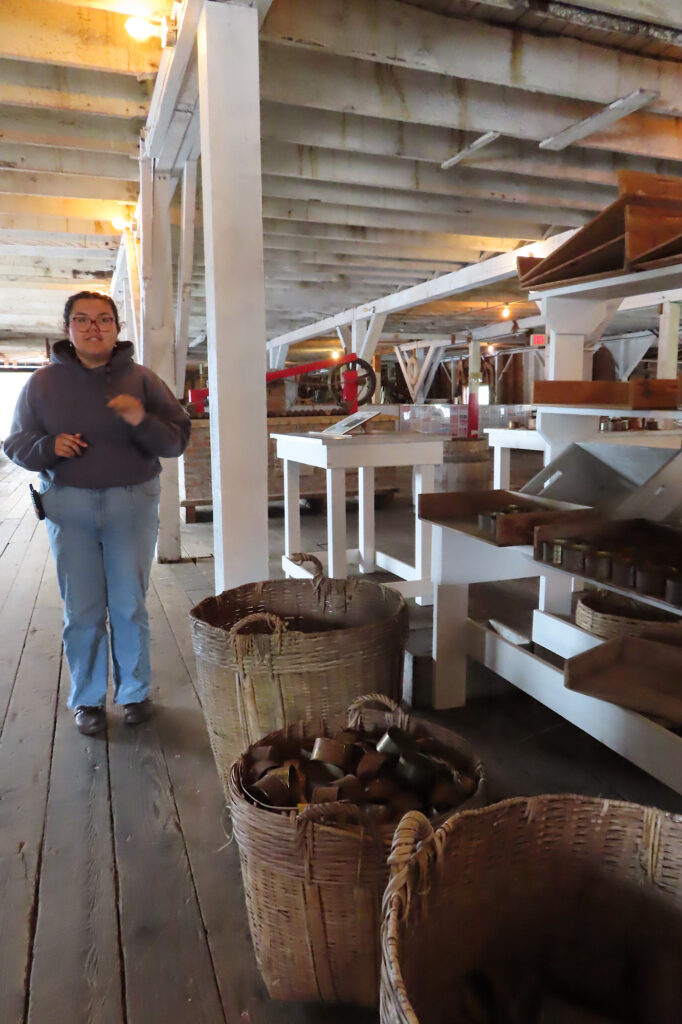
Close your eyes and imagine the clang of metal, the scent of fish and the hum of dozens of workers in motion. It’s history you can feel.
Living, Working, Waiting
From there, we walked past the manager’s house, store, and a lineup of worker bunkhouses—Japanese and European each in their own section, reflecting the deeply segregated housing and labor system of the time.
- Japanese fishermen built and maintained their boats.
- First Nations workers, primarily Tsimshian, fished and worked in the cannery.
- Chinese workers handled cleaning, cooking, and cannery labor—managed under a single “China Boss” contractor who paid, housed, and fed them all.
- European workers lived in the central bunkhouse, near the mess hall and office.
Workers were paid at the end of the season—until then, they used coupon books to buy food and supplies from the company store. If the salmon run was poor? Some went home with little or nothing. If it was good? Enough to make it through the winter.

The Cannery Managers
The manager’s house overlooked it all. Permanent staff arrived in April and stayed until October, bringing records and office equipment back and forth from the Vancouver head office each season.
The North Pacific Cannery changed hands several times:
- Built in 1889 by John Carthew
- Sold in 1891 to Henry Bell-Irving and the Anglo-British Columbia Packing Co. (ABC)
- Managed for decades by a lineup of men with names like Larsen, Lord, Harris, Philipsson, and Ross – all of European descent.
Their job? Keep things running, make a profit, and get fish to market—despite weather, machinery breakdowns, and fluctuating fish stocks.
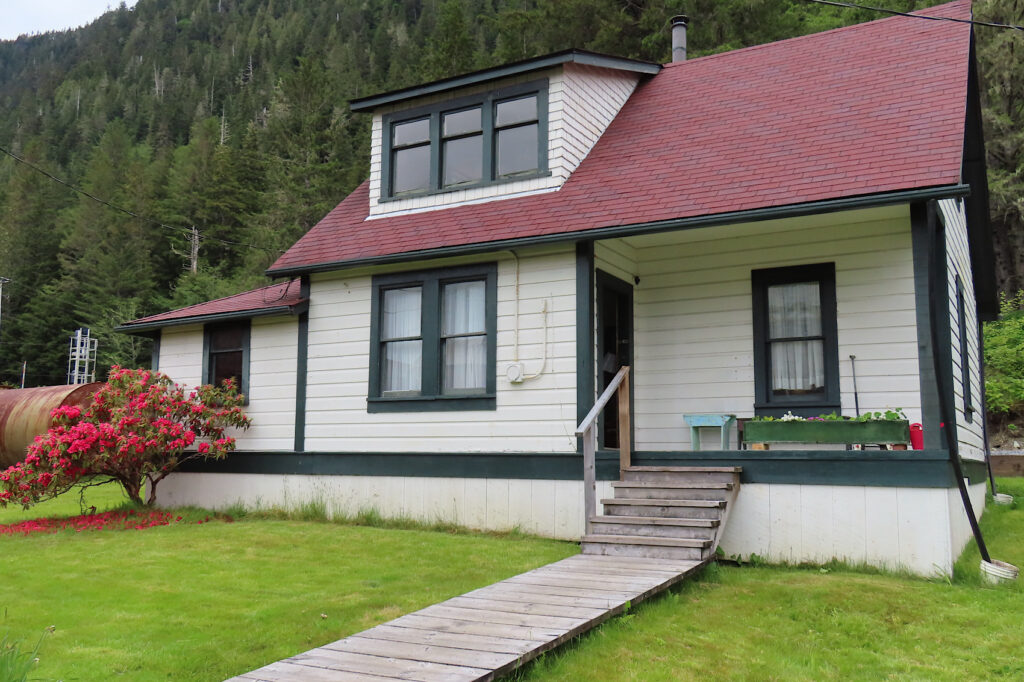
Self-Guided Cannery Adventures
After the guided tour ended, we spent another hour retracing our steps and exploring more of the site. Not all buildings are open to the public outside of tours, but there are plenty of interpretive signs, and you can still get a strong sense of the site on your own.
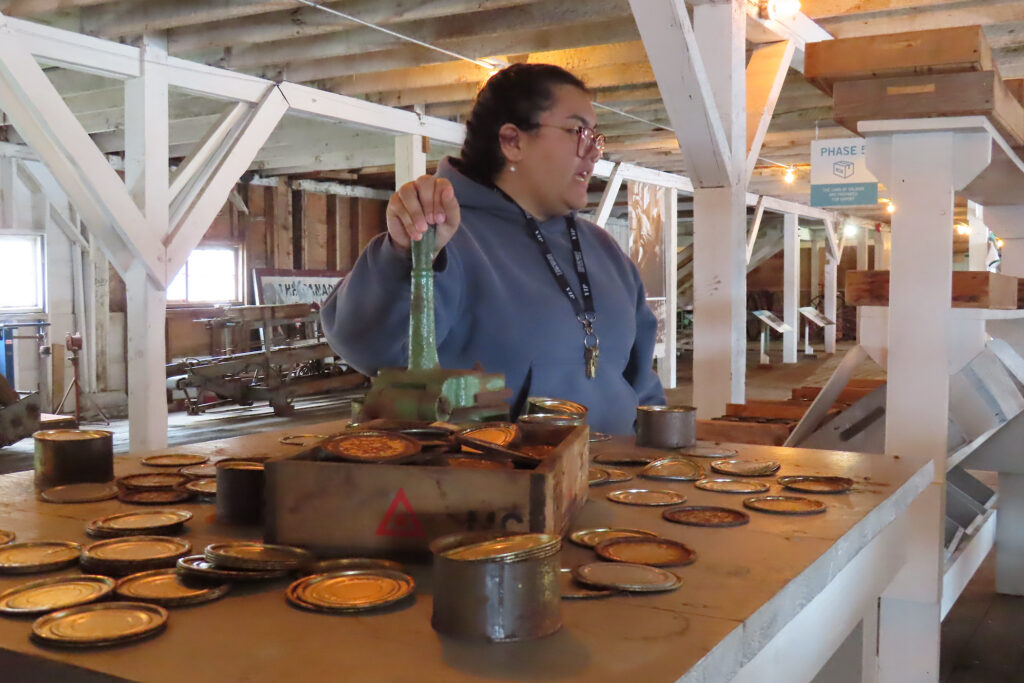
When You Go
The North Pacific Cannery National Historic Site is located 24 km (15 mi) southeast of Prince Rupert at: 1889 Skeena Drive, Port Edward, B.C.
Take Highway 16 east, turn at the Port Edward exit, and follow signs. Be warned: the road past Port Edward is narrow, twisty, and full of surprise dips. Drive with care.
If you’re planning on camping in the area, check out Kinnikinnick Campground in Port Edward.
Looking for more? Learn about the Inverness Cannery or explore the restoration and diversification of the Cassiar Cannery site for more pieces of this coastal story. Bring a Backroad Mapbook if you plan to explore beyond the pavement.
Final Thoughts
The North Pacific Cannery National Historic Site isn’t just a museum—it’s a memory bank. A reminder of how people came together—despite challenges and divides—to build communities, catch fish, and survive in rugged, beautiful places.
It’s industrial history with a human heartbeat. And it’s absolutely worth the detour.
📌 Next stop: A BC Ferry Adventure from Prince Rupert to Port Hardy
Pin this post for your next BC road trip!
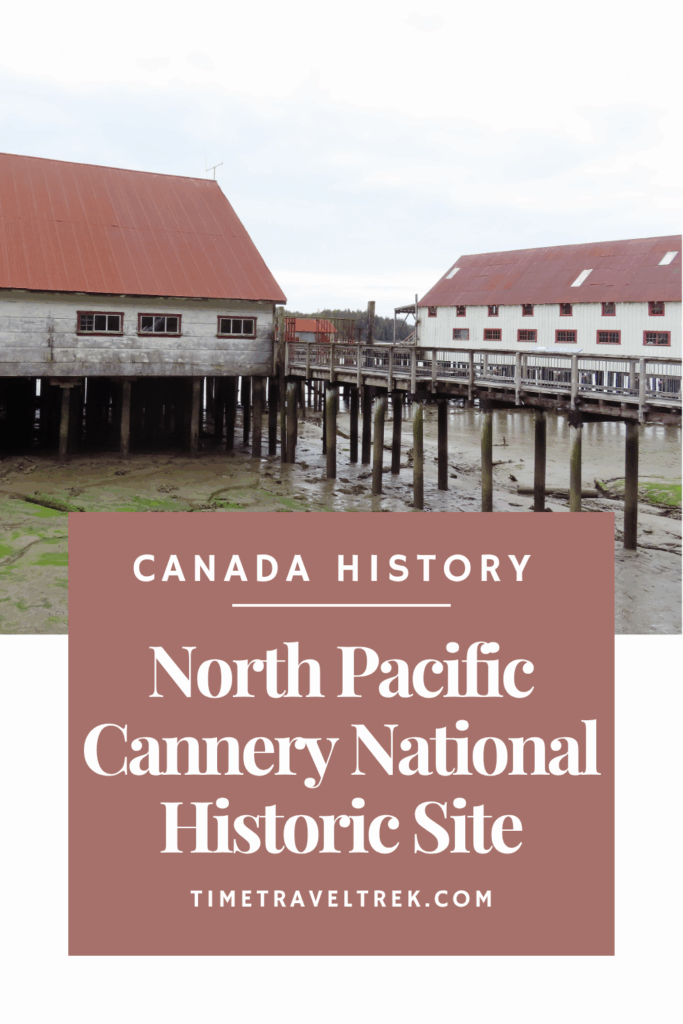
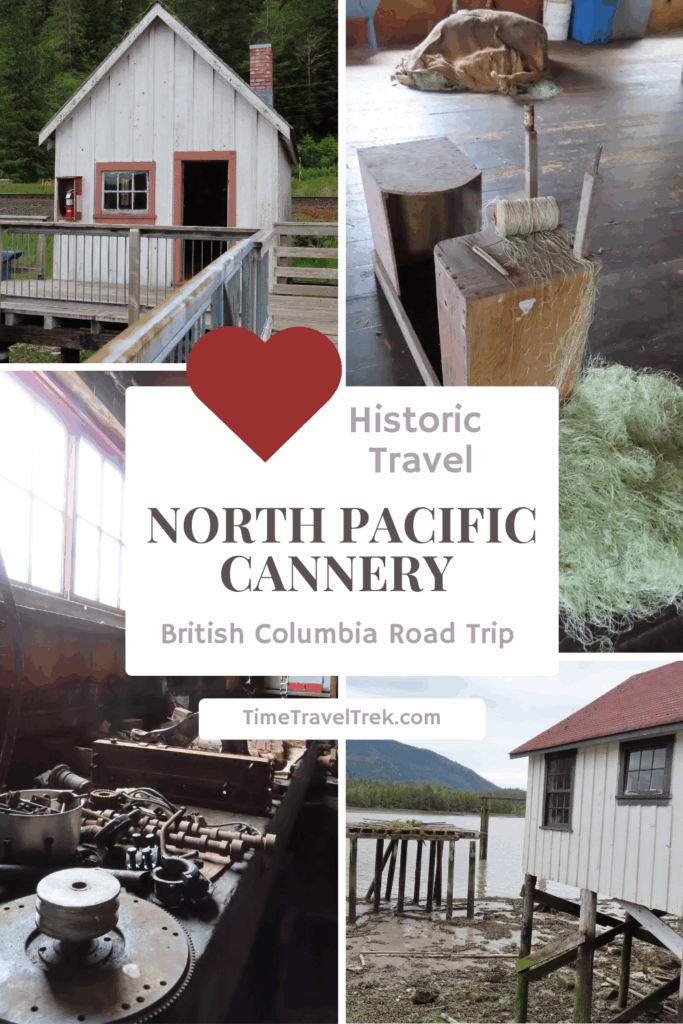
Leave a Reply